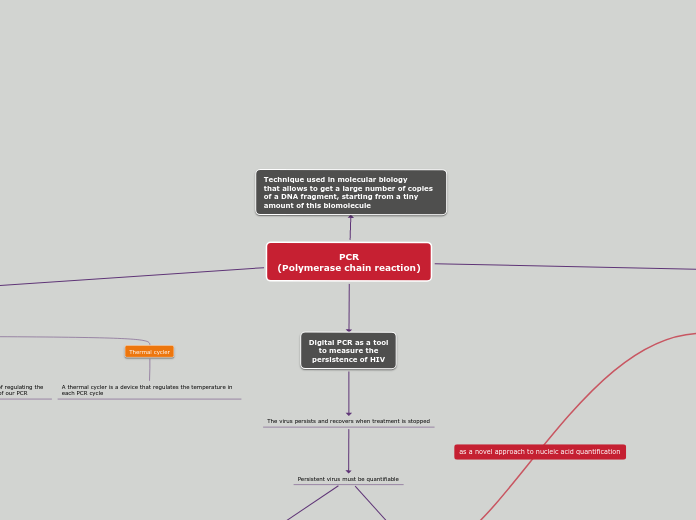PCR
(Polymerase chain reaction)
Technique used in molecular biology
that allows to get a large number of copies of a DNA fragment, starting from a tiny amount of this biomolecule
What is needed to do a PCR?
Template DNA
DNA fragment
What do we want to amplify
by PCR
Deoxyribonucleotides-triphosphate
DNA is made up of 4 types of nucleotides, made up of 4 nitrogenous bases: adenine, guanine, cytosine, and thymine. It is expected, then, that these 4 deoxyribonucleotides-triphosphate are essential to be able to obtain new DNA molecules.
Primers
are oligonucleotides, short DNA sequences, that bind to the template DNA molecule and serve as a starting point to begin DNA synthesis
DNA polymerases
The most widely used given its effectiveness, is the DNA polymerase of the bacterium Thermus aquaticus, also called Taq Polymerase
Divalent magnesium ions
Positively charged ions are used as cofactors of the polymerase. These cations are essential for the function of DNA polymerase. Magnesium chloride is normally added so that magnesium is released upon dissociation
Buffer solution
A buffer solution is a solution that is capable of regulating the pH, that is, the acidity or basicity conditions, of our PCR
Thermal cycler
A thermal cycler is a device that regulates the temperature in each PCR cycle
Other types of PCR
Digital PCR
absolute quantification
has four steps
sample preparation
The division or distribution
PCR amplification
Obtaining data
has a variant called DDPCR
Use a two micro fluid systems
one at the beginning and one at the end of the process
The flow comes out in the form of bubbles
a luminous detector is attached,
RT-PCR
Quantitative PCR
Multiplex PCR
PCR in situ
Nested PCR
Digital PCR as a tool
to measure the
persistence of HIV
The virus persists and recovers when treatment is stopped
Persistent virus must be quantifiable
Used real-time PCR (qPCR) ic
digital PCR is gaining popularity
Various commercial digital PCR platforms available
But Bio-Rad's QX200 ddPCR is currently the most widely used platform in HIV research.
Disadvantages
Currently available digital PCR platforms occasionally struggle with unexplained false positive partitions
reliable segregation between positive and negative droplets continues to be questioned
advantage
Future Advances in Digital PCR Technology Show Promising
to aid in the accurate quantification and characterization of the persistent HIV reservoir
